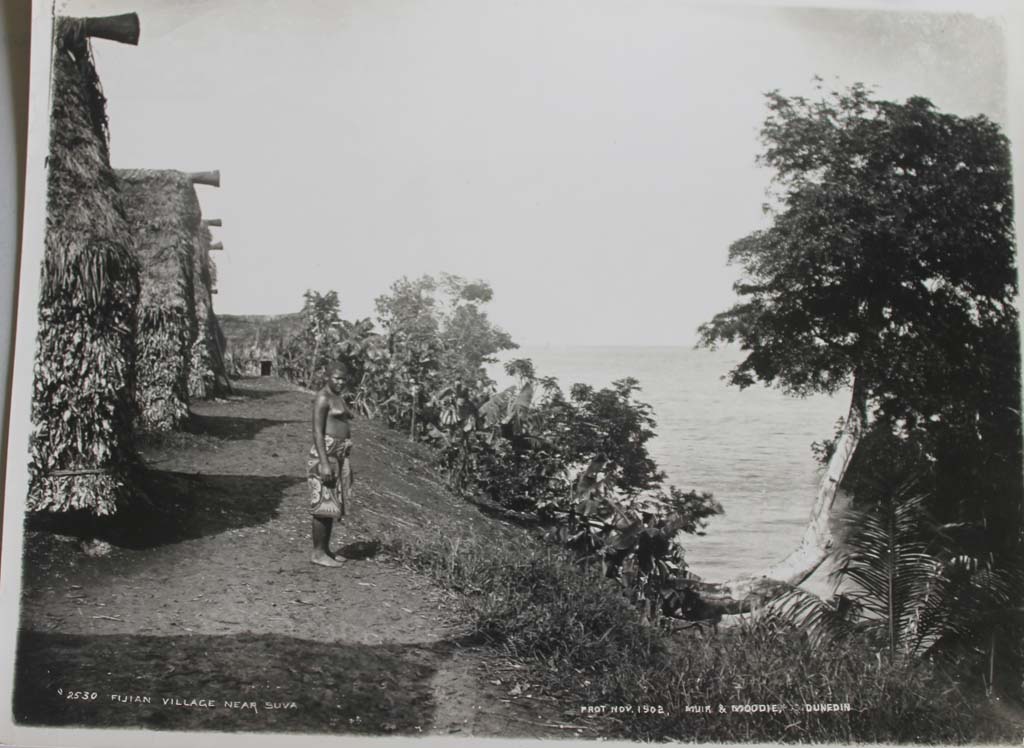Origins of Suva
The indigenous settlement of Suva was established in the early 1800s at the site of the present-day Thurston Gardens. The itaukei were forced to move to Suvavou in 1882 by European colonial powers to make room for the new capital.
Last updated on 17 Jun 2025
![“Fijians – clothing, Village People (Suva area), probably taken during [18]80s” Source: Fiji Museum P32.4/138](/storage/photos/S001_1537746380.jpg)

![“Fijians – Clothing, Village People, Lami area, probably taken during [18]80s” Source: Fiji Museum P32.4/136](/storage/photos/S003_1537746395.jpg)
Timeline
Origins of Suva
Suva people are believed to have crossed the central tableland of Viti Levu from Saivou around 3500 to 2000 years ago. Their leader was Tabanimakoveve who is claimed to have been an immediate descendant of the god Degei.
Suva people reached the district lying to the south of the Waimanu river, where they paused a while, before moving down towards the sea and stopping about Tamavua and Rairainawaqa for a time. They finally settled on the steep grey rock of Uluvatu overlooking Walu Bay (for its natural defences).
There were other settlements too, for example the clans of Tacirua (near Tamavua today), Vuivui (near Colo-i-Suva today) and Vuniveilakou (on the Samambula river). The land lying between Waimanu road and Walu Bay was called Waluwalu, from the kai walu, or fisher clan.
Later the Suva people moved from their old hill forts and built the town of Suva on the site of the present Thurston Gardens. It is estimated this occurred before 1820 under Tabukaucoro’s reign – he was the Tui Suva and Vasu to Bau. There was a moat and rampart then, now no longer visible. Most of the houses were erected for protection inside the ramparts, but some were in the outskirts on the rising ground (then known as Nabuabua) and where the present Government House stands (then known as Korobaba). The rara (town square) is now the drill ground at Nasova Police barracks.
Suva was sacked and burnt in a tribal war during Tabukaucoro’s reign in 1843.
The name Suva comes from the mound on which the temple of Ro Vonu stood and in which was concealed the sacred stone of Vatubulia brought from Vatuwaqa. The concentrated European settlement where the first store and hotel was built was near Nubukalou creek and was simply known as Nubukalou. It’s not clear when or why Suva became adopted as the name for the area.
Though a native Wesleyan teacher was stationed in Suva in 1840, he was withdrawn a year later, and the people did not join Christianity (lotu) until 1856. In 1860 when most of the people had embraced Christianity the inhabitants of scattered outlying villages were brought together and settled at Draiba.
Over time European settlers slowly acquired plots of land in Suva (in some cases purchased, and other cases taken) and cleared it for planting. The Melbourne-based Polynesia Company owned the most land in Suva and changed the landscape significantly. For example, Muanikau means “Point of the Trees” but many of those trees were removed by the settlers and erosion occurred. A lot of the trees left today in Suva are introduced, not indigenous.
In 1882 they moved the indigenous inhabitants of Suva to Suvavou to make way for the transfer of the capital from Levuka.
References
Colman Wall, 1996. Historical Notes on Suva, Domodomo, Vol.10, No.2: 28-39.